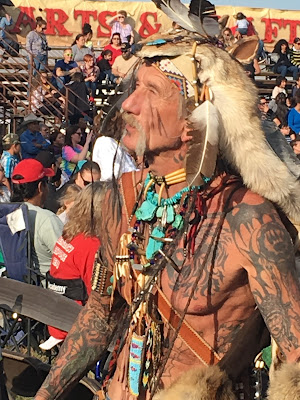 |
Moods for Ska ~We Don't Know
What Ska Is!~ (1997)
Source |
Music Musings: Tokyo Ska Paradise Orchestra (1990-1996) can be found here.
4th Compilation Album: Moods for Ska ~We Don't Know What Ska Is!~ ムース・フォー・トーキョー・スカ 〜ウィ・ドント・ノウ・ワット・スカ・イズ!〜 (1997)
Nope, I did not review TSPO's first three compilation albums as they are rare and quite difficult to locate. I believe this one, although their fourth, is the first worth noting. This album is a hodgepodge of live and studio tracks, and contains many fan favorites like "Pedorazu" and "Monster Rock".
I see this album as a good intro to TSPO; although it's nearly two decades old, many of the songs on this record are played by the band at nearly every concert they play these days, like "Shot in the Dark", "Burning Scale", and "Skadon", all extremely lively songs.
"Mr. Mystery Shuffle" is my favorite track with vocals on the album. It sticks to the traditional definition of a
shuffle beat wise, yet is anything but mundane. Cleanhead Gimura is responsible for the vocals on this one, a posthumous release. If you read
part one of this series, you already know I'm a sucker for his unique vocals, and he sounds borderline evil on this song, so it's particularly delicious to my ears!
Top picks: There's not a track I don't like!
8th Album: Arkestra アーケストラ(1998)
Arkestra was the first of two albums which included the late Cleanhead Gimura's younger brother Rui Sugimura on vocals. Sugimura was far from his older brother's convenient replacement; his singing and personal style are much different from the elder Sugimura's. Rui Sugimura has a lighter, more pop-oriented voice which also goes well with traditional jazz tunes. Nevertheless, I prefer Cleanhead.
Out of the instrumental tracks, "the PIRATES" is my hands-down favorite. It has a comical, sinisterly nature to it as it sounds like the theme song of a cartoon villain—in a good way, of course. Bassist Tsuyoshi Kawakami is the star on this number. While the bass line is simple, it's harmony with Tatsuyuki Aoki's surgical drumming is extremely catchy and addicting.
The majority of the songs on this record include vocals, a few of which are unfortunately on the generic side. However, Sugimura shines on the last three tracks: "Funade no Machi (Sailing Town)"; "Hikari (Light)"; and "Dear My Sister". The harmonica solo close to the beginning of "Funade no Machi", reminiscent of country music, might initially seem out of place. Nevertheless, one of my favorite aspects of this track is the arrangement; I especially like the radio-like filter over the bridge portions. On the foundation of a simple, slow beat, the musical style of the foreground instruments changes. For instance, when Sugimura sings of a "symphony in the sky" the music turns symphonic.
Generally, "Hikari" is driven by Sugimura's melancholic vocals. It's a slower track about saying goodbye, but I find it more soothing than sad. The music is minimalistic to an extent at the beginning, similar to the sound of midi music files, yet the saxophones pick up toward the end
"Dear My Sister" is a favorite of mine because of the lyrics; there's nothing too remarkable about it musically. It's a fun, inspirational song essentially about leaving loneliness behind, and the upbeat tempo makes it fit nicely on my workout playlist. Sugimura's fast, almost rapping vocals adds to the positive mood the song evokes.
During the
Arkestra tour, drummer Tatsuyuki Aoki
died after an apparent suicide and was replaced by Kinichi Motegi. Naturally, this marked a significant change in TSPO's music in the drumming department. Motegi is skilled with amazing singing abilities to boot, but lacks the flair and precision Aoki had in my opinion.
Additionally, this was the first album including guitarist Takashi Kato, who I consider to be more talented than the previous Toru Terashi.










